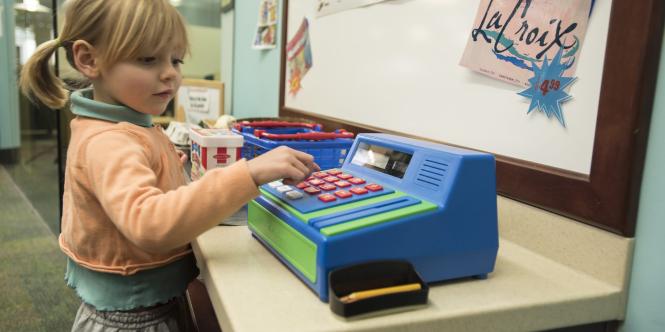5 Practices of Early Literacy
Drawing and scribbling develop fine motor skills and teach children that print represents spoken sounds. It can also help children develop eye-hand coordination and the fine motor control they need to hold a pencil.
- Ages 0-1: Practice activities that build finger muscles, such as picking up Cheerios and grasping toys.
- Ages 1-2: Practice activities that build finger muscles, such as crumpling paper, completing simple puzzles, and grasping small objects like shakers, straws, spoons, and more.
- Ages 2-3: Explore shapes. Letters are made of shapes, so identifying shapes is a first step towards recognizing letters. Play with physical letters, such as magnets or letters made from playdough.
- Ages 3-5: Color and scribble! Ask your preschooler to write about their drawing. Even if they aren’t writing letters, this helps them recognize that written words stand for spoken words.
BINGO: Wizards & Wands Edition
Oct 10th | 6:00pm - 7:00pm
Play a few rounds of fantasy-themed BINGO. Prizes and fun for the whole family!
Disney Heroes Adventure (Ages 2-11)
Oct 6th | 2:00pm - 4:00pm
Celebrate your favorite Disney heroes - from Elsa and Moana to Mirabel and Lightning McQueen. Complete challenges featuring your…
Life-Sized Candyland: Magical Forest Edition
Oct 12th | 10:00am - 2:00pm
Follow the rainbow path through a magical forest of sweet and fantastical surprises. Discover unicorns and dragons while earning sweet…
Creepy Critters | BUGMAN
Oct 25th | 4:30pm - 8:30pm
See and (touch) the amazing world of bugs with Mark Berman and his crew of crawly critters. Also, learn about bees, hives, and…
Reading Challenge
1,000 Books Before Kindergarten
Unlock your child's potential with this reading challenge. For ages 0-5.
Suggested Websites
Create a geeting card together.
Help your child write or draw a thank you letter to someone special.
Discover new things to do...every day!
Get daily ideas for what to read, watch, sing, and try with your child from the Day By Day Ohio Family Literacy Calendar.
Ready, set, balance!
Why? Writing skills start with a strong core. Think tummy time for babies and standing on one leg for toddlers & preschoolers.
Play with pencils & crayons.
Playing restaurant, bank, or post office? Include paper, pencils, and crayons. Why? This encourages children to develop writing skills.
Annamarie C
Annamarie loves all things Disney! When she's not planning her next storytime, she's likely traveling or volunteering at the Columbus Zoo.
Katie R.
Katie knows all of the tricks to start your baby on the path to lifelong reading.
Raychelle S.
When she’s not recommending a great fantasy read or planning an author event, she’s likely floating in a kayak or trying a new recipe...
Grace G.
When Grace isn't helping students tackle their homework assignments, she's likely devouring a delicious pastry or spending time outdoors.


















